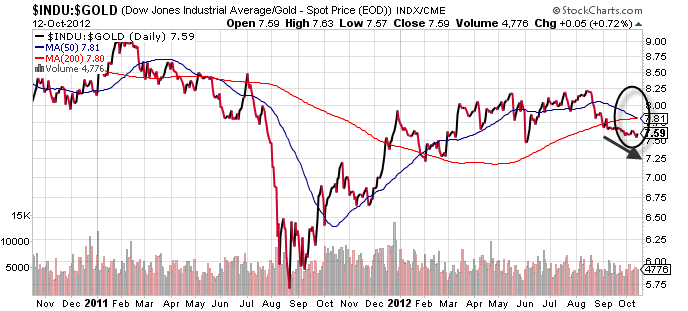 Author: Charles Sizemore
Author: Charles Sizemore
Covestor models: Sizemore Investment Letter and Tactical ETF
The Oracle of Omaha has had a lot to say in recent years, and by his own admission not a lot of it is new. This is not to say that Warren Buffett is incapable of change, of course; consider his high-profile embrace of IBM (IBM) last year after decades of shunning technology companies. But it does get at the heart of what makes Buffett, well, Buffett: an ability to hone in on a small core of fundamental principles and stick with them even when they are unpopular.
I’ll spare readers another Warren Buffett love-fest article, but I do want to share some of the insights from his latest shareholder letter. Though investment possibilities are, in Buffett’s words, “both many and varied,” there are three major categories that we have to choose from:
- “Currency denominated” investments, which would include cash, money market funds, bonds, and other typical fixed income.
- Greater fool assets that will “never produce anything, but that are purchased in the buyer’s hope that someone else – the buyer also knows that the assets will be forever unproductive – will pay more for them in the future.” Dutch tulip bulbs and, of course, gold would fall into this category (see “Why I hate gold.”)
- “Productive assets,” which would include businesses, farms, of real estate.
Buffett’s view on the first category is interesting because it is the 180-degree opposite of the investment maxim generally peddled by Wall Street that stocks are “risky” and bonds are “safe.”
“In truth, Buffett writes, “they are among the most dangerous of assets… High interest rates, of course, can compensate purchasers for the inflation risk they face with currency-based investments – and indeed, rates in the early 1980s did that job nicely. Current rates, however, do not come close to offsetting the purchasing-power risk that investors assume. Right now bonds should come with a warning label.”
Despite this view, Buffett tends to keep a lot of cash and T-bills on hand. As the owner of various insurance companies, he has to. But he also keeps it for another important reason that few investors have the patience to properly realize; having cash on hand allows you to buy the assets in category 3 when they go on sale. Buffett certainly did this with abandon in the years following the 2008 meltdown.
I found Buffett’s comments on the second category—and particularly on gold—to be interesting, given that Berkshire Hathaway has made large investments in precious metals in the past. (Though he has a reputation as a blue-chip stock investor, Buffett has proven to be an investing omnivore over the course of his career.)
Buffett starts by acknowledging that gold bugs are right to fear the assets in category one—cash and bonds—but notes that “what motivates most gold purchasers is their belief that the ranks of the fearful will grow.”
In the most fundamental sense, this is really the only reason why an ounce of gold will rise in value. A gold bug has to sell it to someone even more scared and jaded than himself in order to see a profit. (Yes, the “himself” was on purpose. Gold bugs, for whatever reason, are overwhelmingly male.)
That’s been easy to do for the past decade, of course. And it may well be easy to do for another couple of years. But there are limits to how long the fear trade can run. Meanwhile, even if the price of your ounce of gold rises in dollar terms, there is no compelling reason to see why it would outpace inflation. If you’re lucky, an ounce of gold might buy you the same basket of goods in 20 years that it does today. But isn’t the point of investing to actually make money over time? As Buffett himself puts it, “investing is forgoing consumption now in order to have the ability to consume more at a later date.”
All of this brings us to Buffett’s third investment category, investment in productive assets. I’ve commented recently on the nonsensical notion that your home is an investment (see “I just made a horrible investment”). But rental housing is a very different story. Investors who like to get their hands a little dirty (or who simply find stock market investment boring) can buy homes at very reasonable prices in most American cities. If you can rent the house out and comfortably cover the mortgage, then you have a recipe for slow, steady wealth building.
I also continue to like blue-chip companies paying high and rising dividends. The Sizemore Investment Letter has recommended Intel (INTC), Microsoft (MSFT) and Nestlé (NSRGY), among others, for multiple years now based primarily on their stable businesses and fat dividend payouts. And though it doesn’t pay a dividend, Warren Buffett’s Berkshire Hathaway (BRK-A) is loaded full of companies that do.
As Buffett concludes, “In the future the U.S. population will move more goods, consume more food, and require more living space than it does now… Our country’s businesses will continue to efficiently deliver goods and services wanted by our citizens. Metaphorically, these commercial ‘cows’ will live for centuries and give ever greater quantities of ‘milk’ to boot.
Well said, Mr. Buffett.




